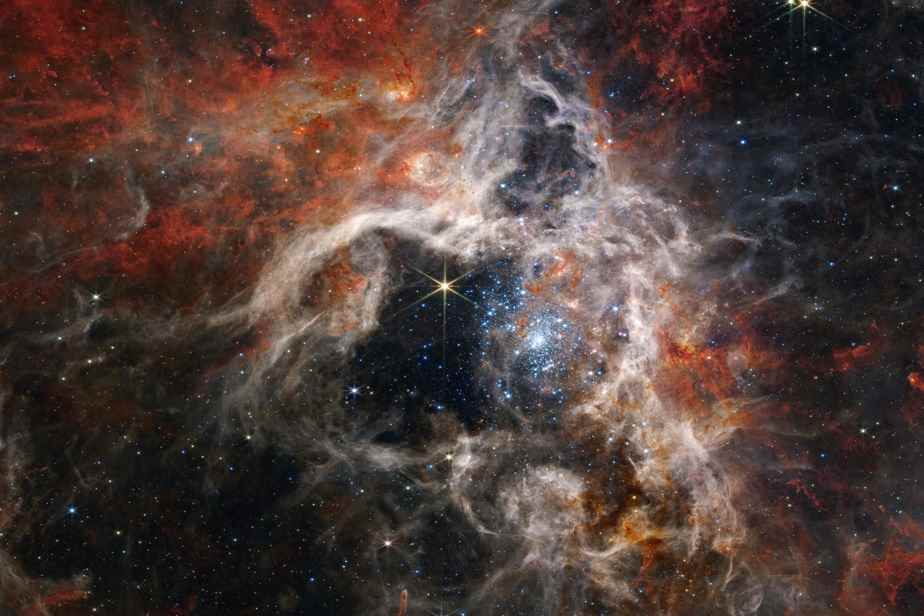(Washington) The James Webb Space Telescope on Tuesday unveiled sublime images of the Tarantula Nebula, a region of the cosmos where stars are born at a breakneck pace, and whose images will deepen scientific knowledge of star formation .
Posted yesterday at 7:51 p.m.
Nicknamed for the shape of its clouds of gas and dust, the Tarantula Nebula is located “only” 161,000 light-years away, NASA wrote in a statement. It is the largest and brightest star-forming region of the entire group of galaxies near ours, and is home to the hottest and most massive stars known.
Although this nebula has therefore long been a target of choice for scientists studying the process of star formation, these images reveal new details, including thousands of young stars hitherto invisible to the eyes of previous telescopes.
Several scientific instruments on board James Webb were used to capture images of the nebula at different wavelengths.
In the center of the image taken by the NIRCam instrument, which operates in the near infrared, is a cluster of very bright young blue stars.
Another instrument, NIRSpec, allowed him to distinguish a star just emerging from its pillar of dust, while maintaining a cloud around it – a stage in its formation that could not have been observed without the incredible abilities of James Webb. Researchers previously thought that this star was actually older, and at a more advanced stage.
“Star-forming regions within our Milky Way are not producing stars at the same breakneck rate as the Tarantula Nebula, and have different chemical compositions,” NASA explained.
Its own chemical composition is therefore of great interest to researchers, because it is similar to regions where stars formed when the cosmos was only a few billion years old, when star creation was the most important.
Launched into space last Christmas and fully operational for only a few months, the James Webb Telescope conducts its observations 1.5 million kilometers from Earth.
According to the US space agency, this piece of engineering “just begins to rewrite the history of stellar creation. »
